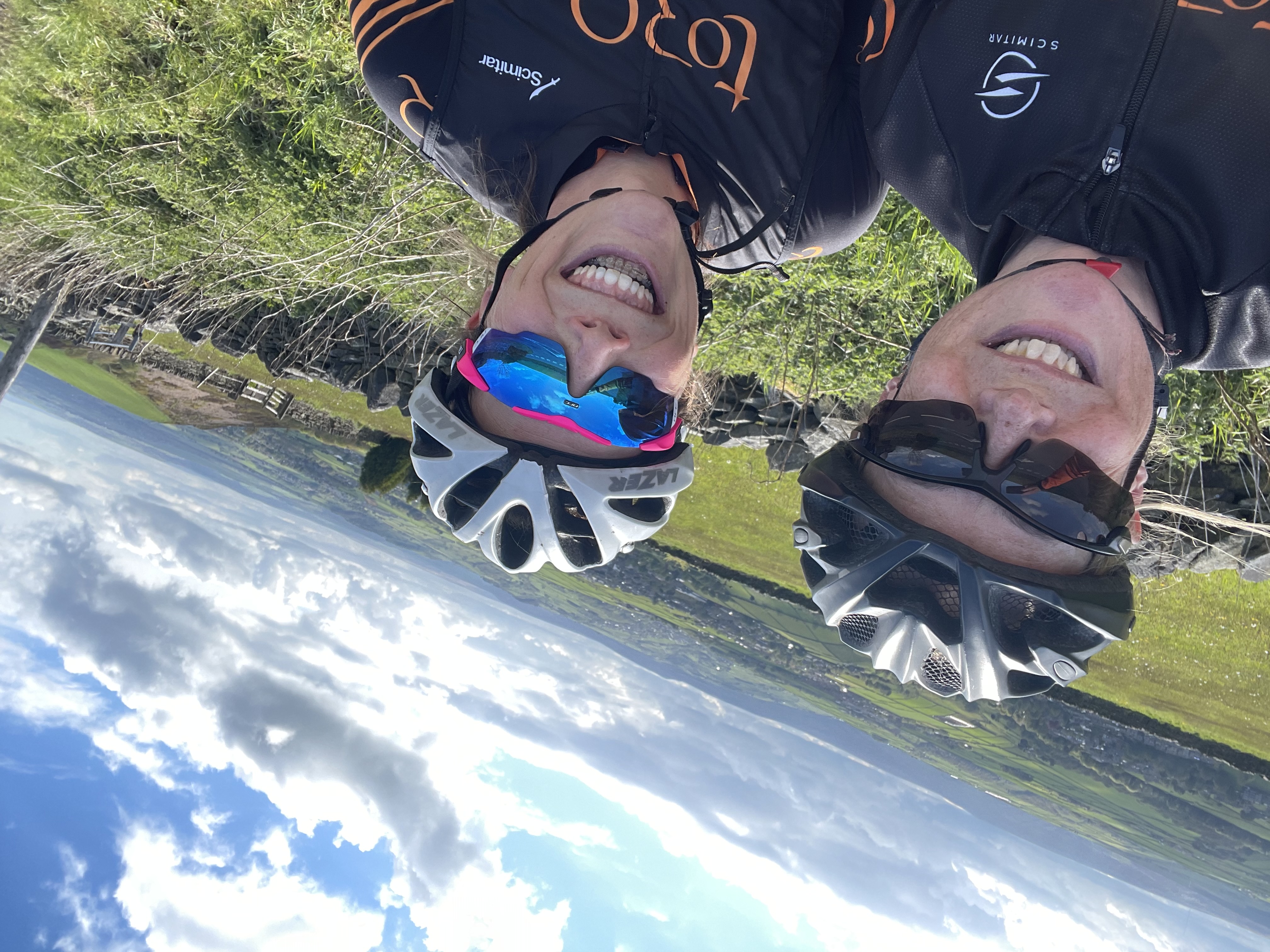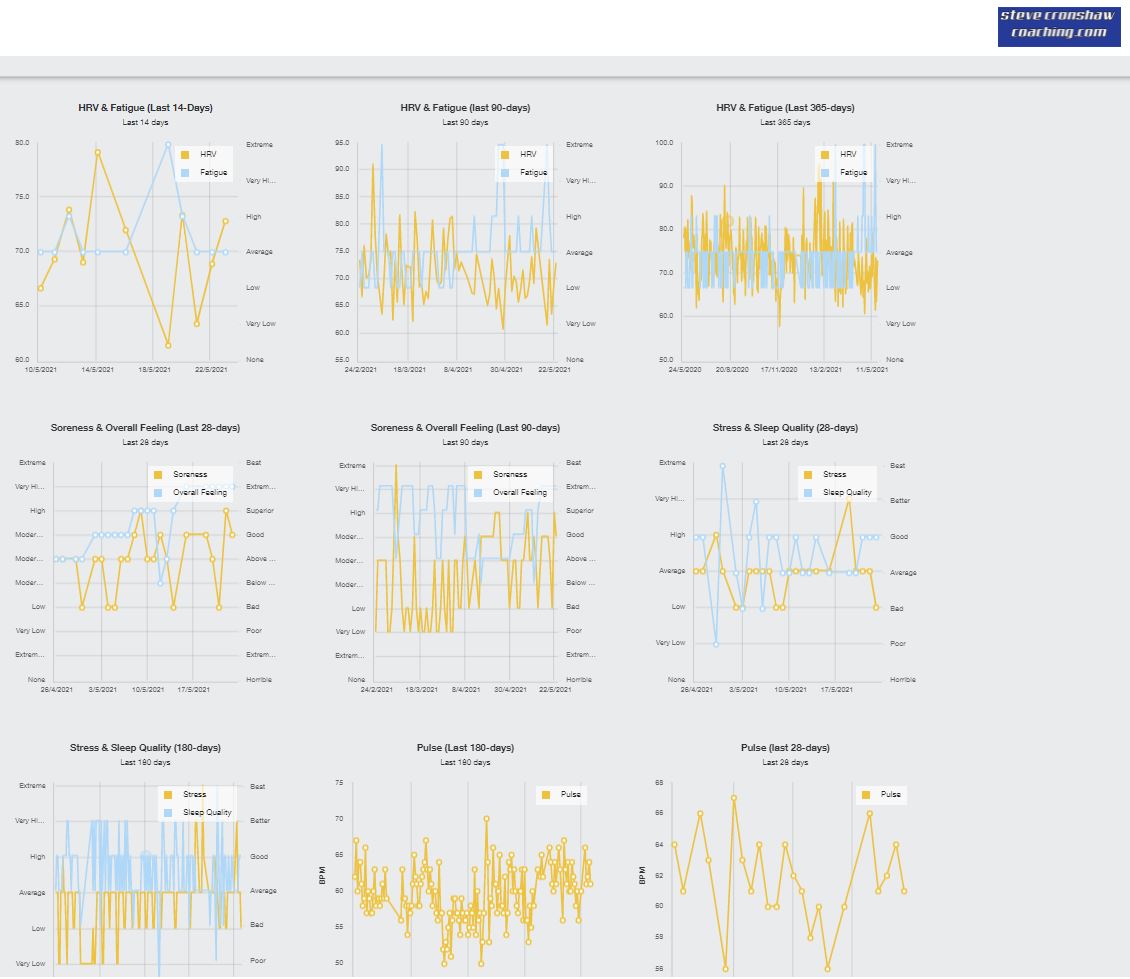ithlete’s HRV measurement turns training data into intelligence – it adds value by personalising data that (while being based on solid research) is otherwise too generic to allow for optimal decisions about training to be made when the human body is uniquely individual. I have been a long term convert to the value of a daily HRV reading, it has kept me healthier than ever but even so, I was surprised by my recent readings. It helped me to understand the impact of psychological stress and to understand and manage my ability to deal with that.

Like many people, I use exercise to let off steam and to help me deal with life stress. After years of being a coached rider, I have a pretty good feel for the volume of work I can put in on the bike and in the gym, and how much recovery I need to keep me from dipping into the dreaded state of over-training. Actually, my coach, the legend that is Steve Cronshaw manages all of that and I (mostly) do as I am told.
Alongside knowing me well, Steve can see my Fitbit tracking of the quality and quantity of my sleep, while he uses Training Peaks to monitor statistics for training stress balance and training stress scores, plus numbers for actual and chronic training loads – nothing is left to chance and Steve stays right up to date with the science behind it all, he even has a Masters Degree in Sports Nutrition. That should be more than enough data to craft the perfect programme for a masters athlete, even if said athlete is attempting to set a new masters world record while running her own business, shouldn’t it?
So imagine my dismay when, despite being very highly motivated to train and in the middle of a block of training which, on paper at least, looked comfortable, I simply could not hit the power numbers prescribed and my heart rate for the effort was unusually high.
The reason was simple – simple that is to everyone except me it seems. The blindingly obvious clue to my malaise was signalled like a beacon by my HRV reading from ithlete. I take my HRV every day and have done for over a decade now. These days it syncs seamlessly with Training Peaks after I have added the subjective scores and Steve sees all of that. I look at the daily ithlete HRV number of course and I could see a downward trend but in this instance it didn’t make sense. I felt reasonably well, tired yes, but overall pretty good and I really wanted to push on. However, despite the demands from my head, the body was simply not able to put the power out.
I was angry with myself and thought I was simply being weak. I had been doing really well and expected to keep progressing but suddenly it was not possible. Then Steve reminded me (even using capital letters to make his point) that having just lost my mother, after a very difficult time with Alzheimer’s, and my body was exhausted, not from physical stress but from mental stress.
It makes sense of course but really, is it true that mental stress could literally drain the energy from me more effectively than a hill interval session? The answer was of course yes. I have never been particularly forgiving of myself – I want my body to perform like a machine when I know human beings are simply not wired that way and if I had not seen the HRV numbers for myself I would have found it very difficult to process what was happening. Stress has always been something I deal with by beasting myself on the bike but the HRV numbers have shown me that this time I needed to be kind to myself and patient with my body.
Every day is a school day, or so they say, and that is certainly true for me. I think I know myself but then life throws me a curveball and once again it’s only by paying attention to ithlete’s HRV numbers, along with some wisdom from Steve, that I have got back on track.
Steve Cronshaw: From a coach’s perspective
What I like about the ithlete app is the way it syncs seamlessly with Training Peaks software. The ability to track HRV is important and the athlete can report on so much more; sleep, fatigue, muscle soreness, stress and mood.
I set up a in Training Peaks to report on each of my athlete’s indexes (see the attached screenshot). This gives me with an overview of the key numbers over short, medium and long term periods of time. If I require more detailed views I can quickly drill down into the information.

In addition to HRV, as a coach, I find the supplementary data essential for each of my athletes every daily. I use it to spot trends and Training Peaks will alert me these fall outside of the athlete’s standard baseline figures. To have this information all in one place for the coach make it powerful data that can be used to improve performance, without overreaching or overtraining the athlete.
